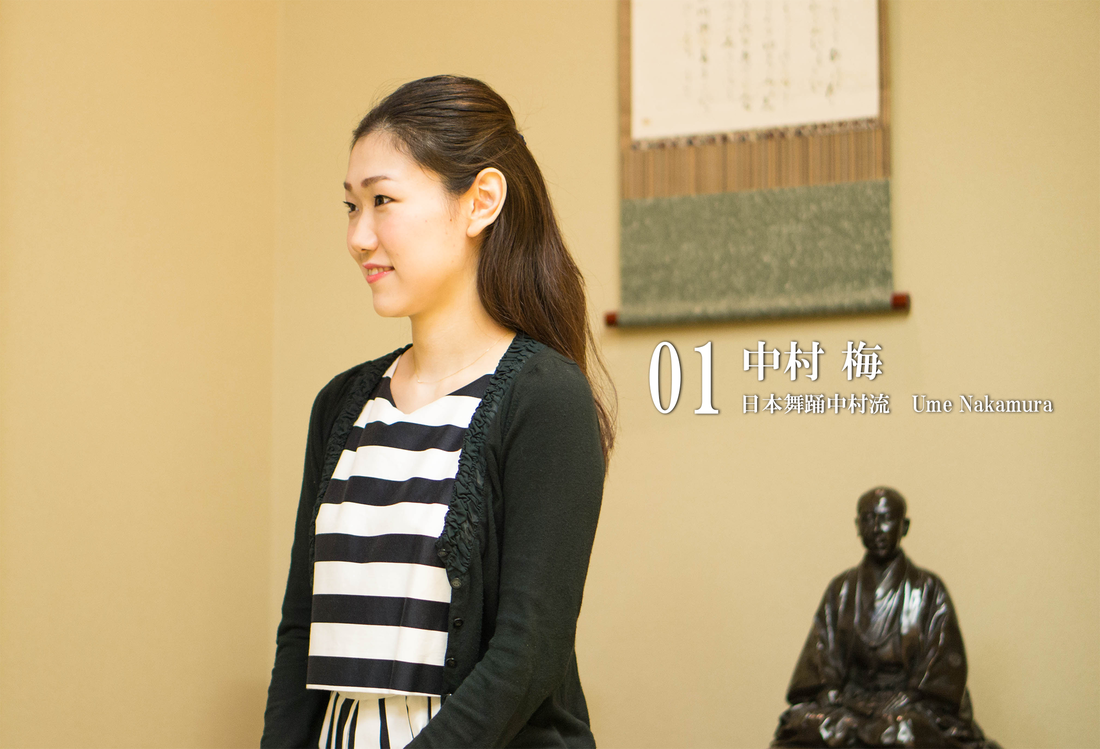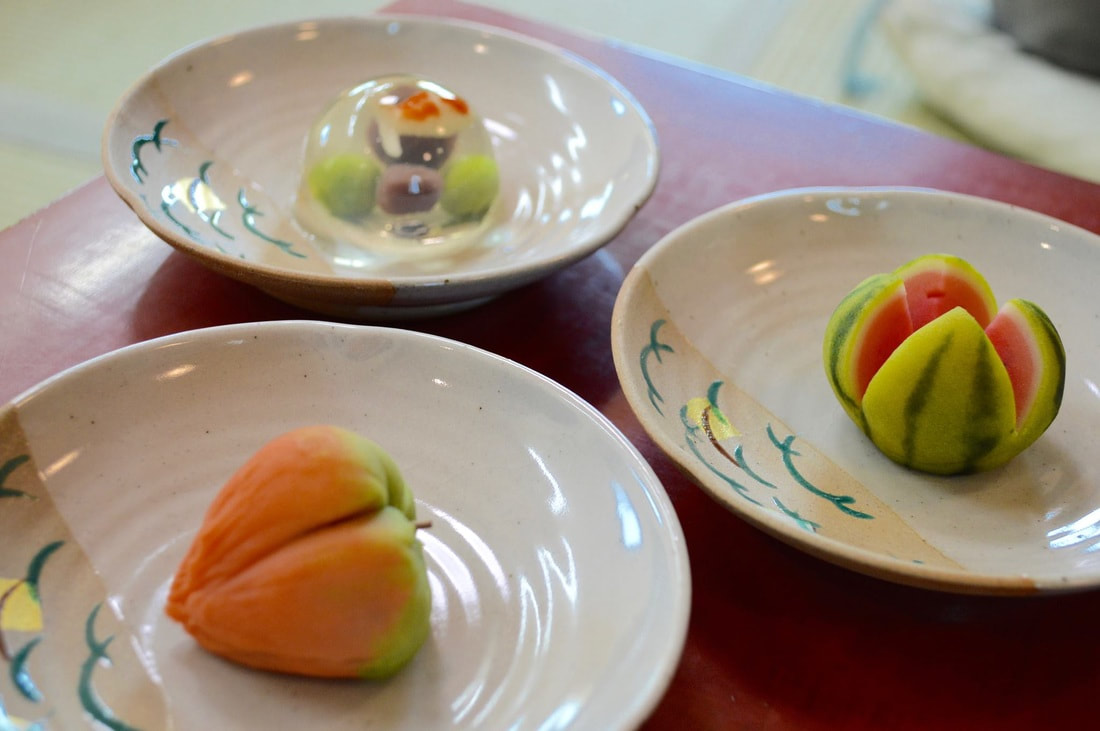|
Ume-san is the daughter of Nakamura-style Japanese dance that has been around since the 1700s, and the second generation Nakamura Umeya of the 8th generation Iemoto (master of the school). In the first part of this interview, we talked about the origins of a dancer and the reasons for continuing a career as a corporation employee. In the second part, we will go further and ask about the future that she want to create. What kind of dancer do you want to become?Most of people in this field are professionals who are engaged in the practice and always working on to improve their performance. Those people must remain in the future. They are so into the world that they perform so well. Traditional arts are passed down. The closest example for me is my mother. I always think that I will never be better than her. I respect her all the time who is addicted to performing arts, but my father, on the other hand, suggests me to pursue business pathway. Growing up in such environment, I thought that I want to be a dancer who can take various perspectives into dancing. I am certain that such kind of dancer is also necessary. It may not be the same way as my mother, but the desire to improve the world of dance is the same, and my respect for dance remains the same. At this moment I am still dancing while I'm working, but eventually the dancing is going to be my main business and would like to tell the story to people who were never reached before. I think it is same with other traditional performing arts, but it's difficult to attract new people so that it is difficult to make money out of stages. It might sound direct, but money cannot be ignored in order to make better stages and train new talents. To that end, I think it is important to attract new people who have never seen it before. I want more young people both as dancers and audiences, and want them to enjoy the unusual experiences. That is what I want to achieve as a dancer. Is there anything you want to do or you are doing to improve the world of dancing?Recently, I try to connect with various people. I want to know more about the outside world. When I meet and talk, they tell me that they want to know more about it as I do not know anything about it although they have a wonderful image about it. Those opinions are so fresh for us being inside of the certain world and appeal to me that the way of receiving the dancing is so different. Every time I talk to people, I always think that there is no single answer that it has to be told in certain way. Even if the way I communicate is different, the way people feel is different to each other. Otherwise, the world of dance will disappear. Actually, it is very difficult for us to reach out to people who do not know anything about dancing and attract them to see the show. Then, why not approach to those who are familiar with art and performances. Even if someone likes or is interested in certain field, it requires a bit of effort to know the details. My mission before I become 30 is to communicate more with those who already have a potential to be interested in this world. In fact, there are many dance and music pieces that I am sure people would love once they know them. One good example is "Dojoji". As a dancer, everyone wants to perform the piece. The story is based on the what is called the legend of Dojoji. Very simply speaking, there are a monk and a woman. She loves him so much but he does not. He tries to run away from her and escapes into the temple called Dojoji. But she still enters pretending as if she is a dancer. Eventually, the monk escaped into the temple bell, and the woman turned into a snake, wrapped around the bells, burned the bell and killed the monk. Isn't this content that is quite a movie or drama now? What's more, in this performance, Dojoji is performed in various versions such as Kirishidan Dojoji. Every dance performance has its own meaning, and it is related to various things. There are many ways to enjoy it, and I want it to be something that you see and do in everyday life, not in a world with a high threshold. Of course it's not just about dancing. I think this is true for the entire Japanese culture. You can think it's boring, if you think so. Don't try to be too serious. If you find the explanation interesting I would love you to watch the show, but it is ok if you do not find it appealing. I do not think this is something that you have to try hard to be interested in. If you think it's interesting or find it enjoyable, please let me talk to you. I would love to talk to many people from different worlds and create and spread new dances. [Nakamura-style Japanese dance] A style originated in the third generation Shikan NAKAMURA, a kabuki actor who was famous during the Bunka and Bunsei periods. The feature is that the actors of Kabuki's Narikomaya have inherited the original family from generation to generation, and the emphasis is placed on the mainstream of Kabuki performances. Since 2012, the second daughter of the first generation, Umeya NAKAMURA, has succeeded the family. Fukusuke NAKAMURA, the 9th generation, as the head of the school and Hashinosuke NAKAMURA, the 3rd generation (Shikan NAKAMURA, the 8th generation as of October 2016), as an advisor. http://www.nakamuraryu.jp/ “Aiming to create a new dance world on a new path different from that of my mother.” Ume-san's goal was a little surprising. Although it is still the first time, we will continue to interview various people in their 20s and 30s who will inherit the wave of tradition and lead the next generation of Japan. It was a story I felt strongly that I would like to create a Japanese culture that will continue into the future by working together in the interviews. Interview: Kuribayashi Stanis Roth, Kitamura Yuki Photo: Tsuchiya Fumino Place: Nakamura Ryu Okoba (Kagurazaka) Sweets: Umekatei (Kagurazaka)
1 Comment
|
NC InterviewExploring lives of young practitioners of Japan's artistic heritage. - List -
01. [Dance] Nakamuraryu - Ume Nakamura (Part1) 01. [Dance] Nakamuraryu - Ume Nakamura (Part2) 02. [Sing] Itchu-bushi - Ryochu Miyako 03. [Sencha tea] My Sencha Salon - Iga Michiho 04. [Flower Arrangement] Sekiso school - Shoko Okudaira (Part1) 04. [Flower Arrangement] Sekiso school - Shoko Okudaira (Part2) 05. [Urushi Laquer] Urushi artist - Tomoya Murose 06. [Glass art] Edo-kiriko Kobayashi - Kohei Kobayashi (Part 1) 06. [Glass art] Edo-kiriko Kobayashi - Kohei Kobayashi (Part 2) 07. [Tea] Edosenke - Hiroyuki Kawakami 08. [Tatami] Tanaka Tatami - Hiroyuki Tanaka 09. [Lacquer brush] The 10th generation of the original lacquer brush artisan - Torakichi Izumi |


